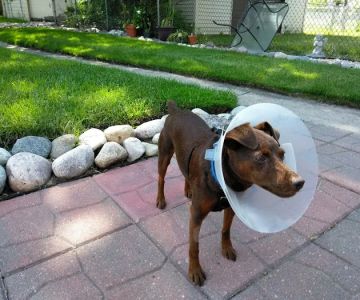Understanding Hip Dysplasia in Pets: What It Is and How It Affects Your Furry Friend
As a pet owner, it's heart-wrenching to see your beloved companion in pain or discomfort, especially when it comes to something as debilitating as hip dysplasia. Whether you’re the proud owner of a dog or a cat, hip dysplasia can significantly affect their quality of life. So, what exactly is hip dysplasia, and how can we treat it?
What Is Hip Dysplasia?
Hip dysplasia is a condition that affects the hip joint, where the ball and socket do not fit together properly. This misalignment causes the joint to wear out over time, leading to pain, inflammation, and even arthritis. While it is most commonly seen in large breed dogs, it can also affect smaller dogs and cats. Breeds such as German Shepherds, Bulldogs, and Golden Retrievers are particularly prone to this condition.
Symptoms of Hip Dysplasia in Pets
Recognizing the symptoms of hip dysplasia early can help you seek treatment for your pet before the condition worsens. Some common signs include:
- Reluctance to jump or climb stairs
- Difficulty rising from a sitting or lying position
- Limping or lameness, especially after exercise
- Excessive panting and signs of pain when touched near the hips
- Reduced activity levels or changes in walking posture
Treating Hip Dysplasia: Effective Solutions for Your Pet
When it comes to treating hip dysplasia, there are several options depending on the severity of the condition. As a responsible pet owner, it’s essential to discuss treatment plans with your veterinarian to choose the best approach for your furry friend.
Non-Surgical Treatments
For pets with mild to moderate hip dysplasia, surgery might not be necessary right away. Instead, there are a variety of non-surgical treatments that can help manage pain and improve mobility:
- Weight Management: Maintaining a healthy weight is crucial for pets with hip dysplasia. Extra weight puts added pressure on the hips, worsening the condition. Your veterinarian can guide you on the proper diet and portion control for your pet.
- Joint Supplements: Supplements like glucosamine and chondroitin can help maintain joint health and reduce inflammation. These can often be found in treats or powders that are easy to mix into your pet’s food.
- Physical Therapy: Physical therapy can be an excellent option for strengthening muscles around the hip joint, improving mobility, and reducing pain. Many veterinary clinics now offer rehabilitation services specifically for pets.
- Pain Management: Pain medications prescribed by a veterinarian can help alleviate discomfort. Non-steroidal anti-inflammatory drugs (NSAIDs) are commonly used to reduce swelling and inflammation.
Surgical Treatments for Severe Hip Dysplasia
If your pet’s hip dysplasia is more advanced, surgical options may be necessary. These procedures are typically recommended when conservative treatments fail to provide relief or when mobility is severely restricted. Some common surgical treatments include:
- Hip Replacement Surgery: Just like in humans, hip replacement surgery is an option for pets with severe dysplasia. During this procedure, the damaged hip joint is replaced with a prosthetic one, allowing for better function and a significant reduction in pain.
- Femoral Head and Neck Excision: In some cases, removing the ball of the hip joint can relieve pain by preventing bone-on-bone contact. While this procedure does not restore full function, it can be effective for pets who are too old or too ill for a full hip replacement.
- Double or Triple Pelvic Osteotomy: This procedure involves repositioning the pelvic bones to improve the alignment of the hip joint. It is generally recommended for younger pets with hip dysplasia before arthritis develops.
Preventing Hip Dysplasia in Pets
While some factors contributing to hip dysplasia, such as genetics, are beyond our control, there are a few steps you can take to reduce the risk:
- Choose the Right Breeder: If you’re considering adopting a dog, make sure you choose a reputable breeder who screens for hip dysplasia in their breeding animals. Reputable breeders test for genetic conditions and breed responsibly.
- Encourage Exercise: Regular exercise helps maintain muscle mass, improve joint health, and maintain a healthy weight. However, avoid high-impact activities like jumping or running on hard surfaces, especially for young, developing puppies.
- Early Detection: If your pet is at risk for hip dysplasia due to its breed, regular check-ups with your veterinarian can help catch the condition early, allowing for quicker intervention.
Conclusion
As a pet owner, it's important to stay vigilant for signs of hip dysplasia and seek timely treatment to help improve your pet's quality of life. Whether through non-surgical treatments or surgical interventions, there are many options available to help manage the condition. The earlier you catch the problem, the better the chances of keeping your pet active and comfortable for many years to come.
If you're looking for personalized advice or treatments, don’t hesitate to contact a professional at Hidden Brook Veterinary. Our experienced team can help guide you through the best treatment options for your pet's specific needs.











